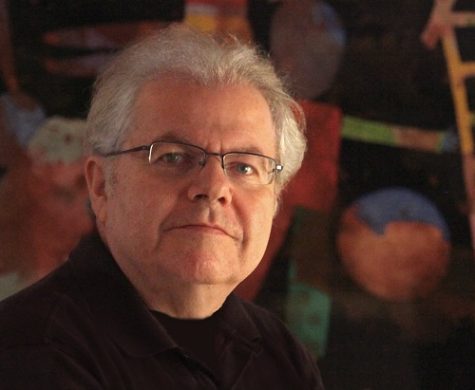 United States Kabelač, Stravinsky, Shostakovich: Emmanuel Ax (piano), Cleveland Orchestra / Jakub Hrůša (conductor). Severance Hall, Cleveland, Ohio, 15.11.2018. (MSJ)
United States Kabelač, Stravinsky, Shostakovich: Emmanuel Ax (piano), Cleveland Orchestra / Jakub Hrůša (conductor). Severance Hall, Cleveland, Ohio, 15.11.2018. (MSJ)

Kabelač – Mystery of Time Op.31
Stravinsky – Capriccio for piano and orchestra
Shostakovich – Symphony No.5 in D minor Op.47
Jakub Hrůša is making an impression in Cleveland. Late last season, he brought Josef Suk’s astonishing but rarely-heard Asrael Symphony to Severance Hall. This time, he combined both familiar and rare fare into the best concert of the season thus far.
The rarest of all was by the Czech composer Miloslav Kabelač (1908-1979), a slightly younger contemporary of Shostakovich. Judging by Kabelač’s Mystery of Time, he was indeed influenced by his Russian counterpart, making this giant passacaglia for orchestra a perfect foil for the second half of the program. Written in the early 1950s, the piece occasionally anticipates minimalism with its obsessive repetition of back-and-forth notes.
Hrůša had to restart the quiet beginning after an idiot cell phone intrusion, but that didn’t keep him from establishing a somber timelessness. From the still opening, Kabelač builds to a roiling and lengthy climax, and Hrůša gave it space, while boldly shaping phrases and pulling deep and rich sounds from the orchestra. The percussion-driven climax evoked a sort of dark Bolero, except that it never released listeners from the tension, and gradually ebbed away to the same timeless stillness from which it emerged. If it ultimately lacked the insight of Shostakovich, it was nonetheless compelling, and warmly received by the audience.
Emmanuel Ax is always beloved in Cleveland, for his approach resonates with the spirit of this region. He’s not here to preen and strut; he’s here to get the job done with honesty and sincerity, and connecting with the musicians of the orchestra is part of the job. So it was a joy to hear the interplay between him and this orchestra in Stravinsky’s Capriccio. While not one of Stravinsky’s most famous works, it stands in some ways as a fulcrum between the brittle hilarity of early masterpieces like Petrushka, and the darker, gesture-driven later ones like his Symphony in Three Movements. Stravinsky wrote the Capriccio as a pianistic vehicle for himself, and recorded it in 1930 in Paris with Ernest Ansermet conducting.
But Ax was even more compelling, shaping and shading phrases, and in ways that brought to life new turns of direction. He kept the lively parts buoyant while reaching into the shadowy corners, without exaggerating their gravity. Orchestra members intertwined with Ax in the manner of a baroque concerto grosso, and Hrůša gave the tutti passages real presence, even with the reduced number of performers. As an encore, Ax played Schubert’s Impromptu in A-flat.
Shostakovich’s Fifth is his most popular symphony, and played frequently. When a reading is less than compelling, it can seem like a warhorse run-through, but when played like it was here, it more than justifies its popularity. Hrůša took a fairly though not unreasonably spacious approach to the first movement, working closely with sections to sculpt phrases vividly. With the first entry of the horns, it was clear that this was not going to be restrained as is typical from this group, and it was wonderful to hear that magnificent section let off the leash.
Plunging into the development of the epic first movement, Hrůša’s tempo was surprisingly slow and emphatic at first, but his overall design became clear: gradually but relentlessly accelerating to a very brisk pace for the snare drum-driven march to the climax. The whole build-and-retreat arc of this movement mirrored the Kabelač in the first half of the program.
At Hrůša’s heavy pace, the scherzo was a trifle chunky, but on the plus side, he gave listeners a full saturation of orchestral sound – something not often heard in Severance Hall since the directorship of Lorin Maazel. Violinist Peter Otto was suave in the pseudo-folksy trio, and oboist Frank Rosenwein’s comic echo of it was perfectly droll. The riot of colors was intoxicating.
Yet emotions were never forced. The Largo started out quite reserved and understated, only slowly accumulating tension. But by giving soloists room to make emotionally moving moments, the tension grew powerful. Joshua Smith on flute, Afendi Yusuf on clarinet, and the guest principal horn all deserve salutes, but if there is one instrument that Shostakovich used as his go-to in moments of intense emotion in the Fifth, it is the oboe.
Luckily for us, Rosenwein is the orchestra’s principal, and he plays the instrument like it is a nerve sensitive to the slightest change of atmosphere. His solos were simply breathtaking, with Hrůša giving him room to maneuver before the rest of the orchestra resumed for a shattering climax.
The sole miscalculation was a pause after the Largo, which dissipated the tension before the finale. Granted, the wave of audience exhalations testified to how much they were engrossed, but nevertheless, that tension propels the finale. Hrůša echoed the first-movement development by starting the Allegro broadly, gradually ratcheting up the tempo to a very fast peak, which is exactly what Shostakovich’s score says, though most conductors ignore that in favor of one solid tempo. Kudos to Hrůša for bringing the composer’s concept to life.
He kept the quiet middle section moving along so that the pace lined up perfectly for the half-time march of the recapitulation and coda. Without exaggerating the dynamics, Hrůša also made sure that the hysterical edge was there as the symphony reached its ambiguous, overly bright ending. The audience responded with a lengthy ovation.
Hrůša has delivered two of the best Cleveland Orchestra concerts of 2018, both with inspired programming and daring conducting. Let’s hope we’ll be seeing a lot more of him.
Mark Sebastian Jordan
